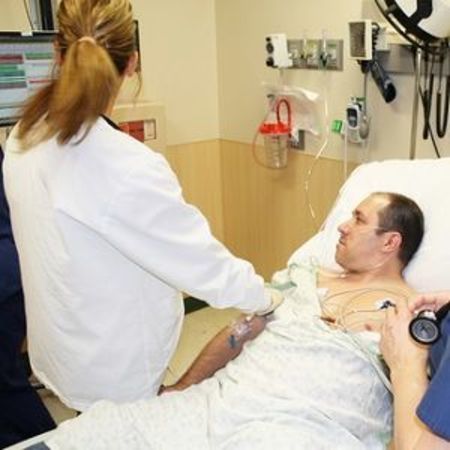The American College of Cardiology and American College of Radiology have released new recommendations for diagnosing chest pain in the emergency department. The document outlines appropriate use of diagnostic imaging in 20 fundamental clinical scenarios for emergency imaging for chest pain.
The clinical scenarios are broken down into leading critical diagnoses: acute coronary syndrome, pulmonary embolism and acute aortic syndrome. A fourth category, triple rule out computerised tomography (CT), is included for the minority of patients for whom a leading diagnosis is not possible. Each recommendation assesses when imaging is useful in a given scenario, and if so, what information is provided by the specified imaging procedure.
According to the authors, “Imaging appropriateness explicitly considers two questions: [one] is any imaging justified for 20 clinical scenarios that categorise patients after history, physical examination and ancillary testing? And [two] if justified, what meaningful incremental information will an imaging procedure provide?”
Using the well-established modified Rand methodology, an expert panel rated each of the diagnostic procedures for the 20 clinical scenarios on a scale from 1 to 9. Each procedure has a corresponding rating of "rarely appropriate," "may be appropriate" or "appropriate."
See Also: Cardiac MRI For Patients with Acute Chest Pain
"This document captures a wide scope of those patients who come to the emergency department with chest pain, although there will always be patients who present unique situations and no document can be a substitute for clinical judgment," says Frank J. Rybicki, MD, PhD, professor and chair of the department of radiology at the University of Ottawa, head of medical imaging at The Ottawa Hospital and co-chair of the writing committee.
The authors explain that the concept of appropriateness assesses the risks and benefits of a treatment, test or procedure and that these criteria provide imaging guidance to inform the clinician's judgment.
The new guideline is published in the Journal of the American College of Cardiology and the Journal of the American College of Radiology. The document was developed in collaboration with several other speciality societies including the Society of Cardiovascular Patient Care.
Source: American College of Cardiology
Image credit: Flickr.com
The clinical scenarios are broken down into leading critical diagnoses: acute coronary syndrome, pulmonary embolism and acute aortic syndrome. A fourth category, triple rule out computerised tomography (CT), is included for the minority of patients for whom a leading diagnosis is not possible. Each recommendation assesses when imaging is useful in a given scenario, and if so, what information is provided by the specified imaging procedure.
According to the authors, “Imaging appropriateness explicitly considers two questions: [one] is any imaging justified for 20 clinical scenarios that categorise patients after history, physical examination and ancillary testing? And [two] if justified, what meaningful incremental information will an imaging procedure provide?”
Using the well-established modified Rand methodology, an expert panel rated each of the diagnostic procedures for the 20 clinical scenarios on a scale from 1 to 9. Each procedure has a corresponding rating of "rarely appropriate," "may be appropriate" or "appropriate."
See Also: Cardiac MRI For Patients with Acute Chest Pain
"This document captures a wide scope of those patients who come to the emergency department with chest pain, although there will always be patients who present unique situations and no document can be a substitute for clinical judgment," says Frank J. Rybicki, MD, PhD, professor and chair of the department of radiology at the University of Ottawa, head of medical imaging at The Ottawa Hospital and co-chair of the writing committee.
The authors explain that the concept of appropriateness assesses the risks and benefits of a treatment, test or procedure and that these criteria provide imaging guidance to inform the clinician's judgment.
The new guideline is published in the Journal of the American College of Cardiology and the Journal of the American College of Radiology. The document was developed in collaboration with several other speciality societies including the Society of Cardiovascular Patient Care.
Source: American College of Cardiology
Image credit: Flickr.com
References:
Rybicki FJ, Udelson JE, Peacock WF et al. (2016) 2015 ACR/ACC/AHA/AATS/ACEP/ASNC/NASCI/SAEM/SCCT/SCMR/SCPC/SNMMI/STR/STS Appropriate Utilization of Cardiovascular Imaging in Emergency Department Patients With Chest Pain. J Am Coll Cardiol. Published online
22 January 2016; doi: 10.1016/j.jacc.2015.09.011
Latest Articles
healthmanagement, chest pain, emergency department, acute coronary syndrome, pulmonary embolism, diagnostic imaging
The American College of Cardiology and American College of Radiology have released new recommendations for diagnosing chest pain in the emergency department. The document outlines appropriate use of diagnostic imaging in 20 fundamental clinical scenarios



























